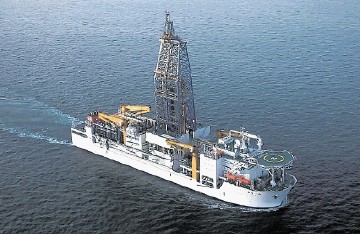
Methane hydrates have for some years been touted as a possible source of harvestable energy, despite the difficulties associated with their exploitation and methane’s alleged role in global warming.
Japan is among the leaders in methane hydrates research and is making preparations to carry out scientific drilling next year. Promotors of the research claim that first commercial production could be achieved by 2018 – just six years hence.
Japan Oil, Gas & Metals National Corporation (JOGMEC) expects to start drilling in the deep waters off Japan’s Aichi Prefecture early-year. The company is to use the Japan Agency for Marine-Earth Science & Technology’s drillship Chikyu for the drilling operation about 80km south of the Atsumi Peninsula in 1,000m of water.
JOGMEC said last month that, if successful, this will be the world’s first controlled seabed output of methane hydrate, which the energy-deficient Japanese see as a significant future source of energy.
Either JOGMEC and/or Japan Petroleum Exploration Company (JapEx) are expected to conduct further tests in 2016 to determine potential production volumes with a target of commercial output by 2018.
In next year’s programme, the Chikyu is expected to drill 260m or more beneath the seabed and establish four wells by the end of March.
One of the wells will be used for methane hydrate production tests and the others to monitor possible changes in the environment, including temperature variations, as a result of the project.
Gas hydrate deposits in the Atsumi Peninsula area are estimated to be around 35trillion cu.ft . . . enough to satisfy Japanese demand for a decade.